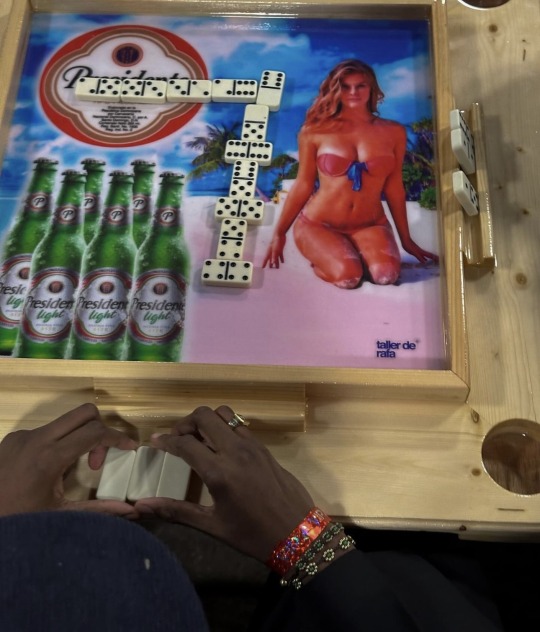#art dominicana
Explore tagged Tumblr posts
Text

miku de la República Dominicana!!!
#i love this trend#so fun#🇩🇴🇩🇴🇩🇴#miku monday#hatsune miku#hatsune fanart#miku hatsune#dominican miku#vocaloid#dominican republic#🇩🇴#republica dominicana#brazilian hatsune miku#every country's miku#my art#digital artist#art#artists on tumblr
269 notes
·
View notes
Text







Casa ALMA Tropical, Punta Cana, República Dominicana,
Credit: Blussand Tosco
#art#design#architecture#luxury pad#luxury lifestyle#ultimate pad#interior design#luxurypad#concept#render#luxury house#luxury home#tropical#casa#casa alma#punta cana#republica dominicana#blussand tosco
141 notes
·
View notes
Text

#postsss#fotosss#dominoes#dominos#dominican republic#dominican#puerto rico#puerto rican#latino#hispanics#cultura hispana#cultura#republica dominicana#photography#lifestyle#daily life#streetwear#streetart#street art#tourism#nyc#washington heights#dyckman#colombia#venezuela#brazil#mexico
113 notes
·
View notes
Text

@taipan29 :)
#countryhumans#fanarts#ch#centroamérica#dominican republic#república dominicana#fanart#fan art#Republica Dominicana ch#republica dominicana countryhumans#fem
247 notes
·
View notes
Text

#hiphop#model#indeedgoodman#luxury#fyp#art#design#beauty#glamour#hairstyle#woman#beautiful#female model#dominican girl#dominicana#trinidad#trinidadian#fine#shoulders#face#so fine#fine as hell#fine as fuck#fine ass women#fine art#tattoed girls#tattoed babe#inked girls#tattoed beauty#sexy tattoed women
39 notes
·
View notes
Text

For #danteshifi for #artbasel2024
Been a while, how's everything tumblr?
14 notes
·
View notes
Text




🤔🤔🤔
#drawn#procreate#drawing#art#countryhumans#countryhumans mexico#countryhumans peru#countryhumans chile#countryhumans usa#countryhumans argentina#countryhumans art#countryhumans panama#countryhumans venezuela#countryhumans republicana dominicana#countryhumans Cuba#countryhumans latinoamerica#countryhumans Guatemala#countryhumans Bolivia
24 notes
·
View notes
Text




Tokischa for Vogue Mexico
Olga de la Iglesia
#tokischa#olga de la iglesia#arte#republica dominicana#dubi#art#antilles#arte latinoamericano#caribbean#latin american art#caribbean art#caribbean artist#dembow#doobie
253 notes
·
View notes
Text


9 notes
·
View notes
Text


Como hoy es día de la raza quise hacer unos dibujitos :p
#countryhumans#countryhumans taino#countryhumans art#countryhumans republica dominicana#artwork#artists on tumblr#countryhumans dominican republic#countryhumans virreinato colombino#virreinato de las indias
11 notes
·
View notes
Text
Taino Cacique Duho Ritual Seat

#taino#ancient art#pre-columbian#artifacts#ancient history#archaeology#art history#taino cohoba#taino artifact#taino ritual#taino duho#duho seat#hispaniola#dominican republic#república dominicana#dominican girl
2 notes
·
View notes
Text
Mold Pig (Sialomorpha dominicana) – Tardigrade's Real Cousin

“ The mold pigs can't be placed in any group of currently existing invertebrates — they share characteristics with both tardigrades, sometimes referred to as water bears or moss pigs, and mites but clearly belong to neither group. ”
– George Poinar Jr.
Sialomorpha dominicana, also known as the mold pig, is a panarthropod genus of uncertain affinities discovered in 30-million year old Dominican amber by George Poinar at Oregon State University and Diane R. Nelson at East Tennessee University.
Take Note: All of my drawings and photos of people, animals, plants, mythology, disasters, organizations, events, and more are purely fictitious. These are included in real-life situations and events with fictional characters or creatures that aren't real, be at your own risk. For nationality or indigenous, be advised. Ognimdo.
Etymology
The tiny swines' proposed scientific name, Sialomorpha dominicana, derives from words meaning "Dominican fat hog-shaped" in Greek.
Physiology
It was assigned to a distinct genus and family (Sialomorphidae) and seems to belong to a new phylum. Sialomorpha dominicana is somewhat similar to mites and tardigrades. It grew by molting its exoskeleton and is around 100 µm long. It most likely consumed small invertebrates and fungus, such as mold, as an omnivore. These fossils' anatomical structures and developmental patterns show a period of time when particular animal kinds started to exhibit particular features. Unlike tardigrades and mites, they lack claws on the tips of their legs.
Abilities
The mold pigs shared warm, moist surroundings with pseudoscorpions, nematodes, fungi and protozoa.
Ecology
Coming soon.
Behavior
Coming soon.
Distribution and Habitat
Recently, he and his colleague Diane Nelson of East Tennessee State University came upon several hundred mold pig fossils coated in amber from the Dominican Republic. The specimens date back to the mid-Tertiary period, about 30 million years ago, and would have shared their habitat with pseudoscorpions, nematodes, protozoa, and fungi, the authors said.
Gallery
Coming soon.
Reference
#ognimdo2002#earth responsibly#science fantasy#earth#ibispaint art#art ph#tardigrade#Sialomorpha dominicana#sialmorpha#dominican republic#extinct#paleoillustration#paleontology#paleoart#haiti#invertebrates#ibis paint x
10 notes
·
View notes
Text




Papito, 2011 La Tía y la Santa, 2011 Paciencia, 2011 Altar, 2011
Colección "El Papaupa de la Matica", Joiri Minaya.
#joiri minaya#república dominicana#dominican republic#republica dominicana#dominican art#arte dominicano
13 notes
·
View notes
Text

#postsss#fotosss#tokischa#reggaeton#bad bunny#latina#musica#musica latina#photography#street photography#female model#vetements#balenciaga#tattoos#chest tattoo#winter fashion#dominican republic#puerto rico#puerto rican#dominican#dominicana#mexicana#dembow#streetwear#street style#street fashion#fashion#art#life#gay
74 notes
·
View notes
Text

Nicauris character sheet
#illustration#art#design#artists on tumblr#digital illustration#character design#character art#digital art#anime#dominicana
11 notes
·
View notes
